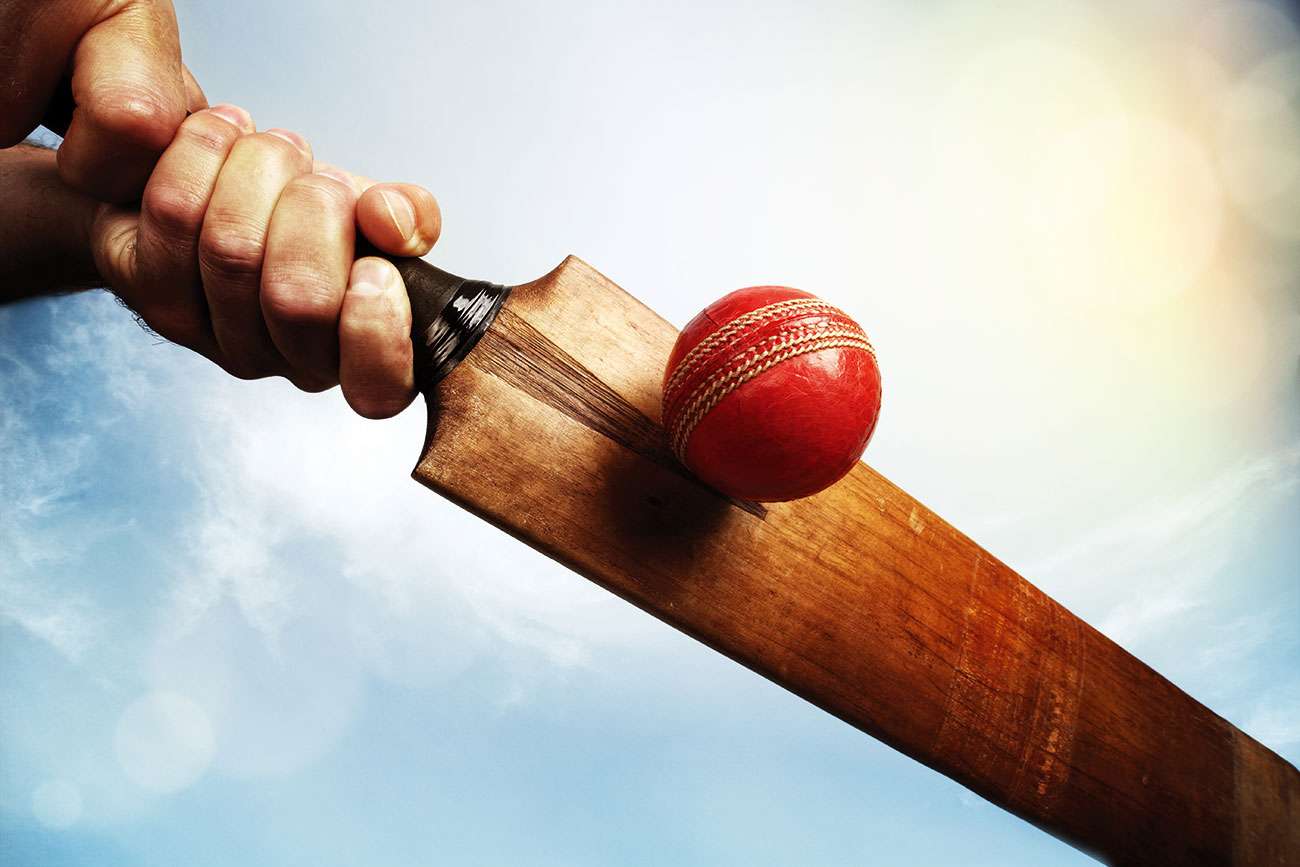
I was born in 1953 when my parents were living with my grandparents in Ash Vale, close to Frimley. They then moved to Normandy, near Guildford. I had two sisters and three brothers, two of which sadly passed away in infancy. Normandy was mainly a farming community and I have a very good recollection of seeing cows walk up the middle of the road from the field, ready for milking.
The farm opposite our house was an arable farm and we would watch the harvest and hay making happen every year. It was a very happy, safe and rural place to grow up.
My dad was a serving sailor, who joined the navy at 15 in 1936 and trained as a gunner. It was mentioned in dispatches that he was injured by shrapnel in a fight with a Stukka. He was very proud of this fact because the shrapnel went straight into his leg and was never removed, so he carried his memorable ‘war wound’ around with him everywhere he went.

John Woodford in his office
My mother had several part time jobs, as well as running the home, cooking and looking after the children. When my father came out of the navy he worked as a Range Warden on Ash Ranges, where the military have firing ranges. The pay was abysmal from what I understood, so he went on to become a bus conductor. He was a hardworking man though we hardly saw him because he would leave early in the morning and do double shifts to earn extra wages. He would come home on a Friday night with a brown wage packet, which he would give to my mum; she would take out the housekeeping money and would give him his pocket money. I can remember the first time he earned £20 in one week after he’d worked many long hours. He brought home the £20 and my parents were ecstatic. It was worth a fortune to them in the early 60’s. All those vivid memories stick with me to this day.
At the end of Junior School, I passed the 11 plus exam and went on to Camberley Grammar school. I didn’t like the academic side of school but I really enjoyed the sport. I played football and cricket for the school. Although I passed the 11+ exam gaining a place at the grammar school, my academic focus just wasn’t really there. I knew nobody at Camberley Grammar and found it very difficult to settle in and left school at 16.
Having left I had no idea what I would do. Having my Grammar School attendance on my CV gave me a good advantage. People liked to see that, it implied a certain level of intelligence though I was always the one to knock that ‘law’ out! Fortunately, it was the era when the papers were full of jobs and opportunities.
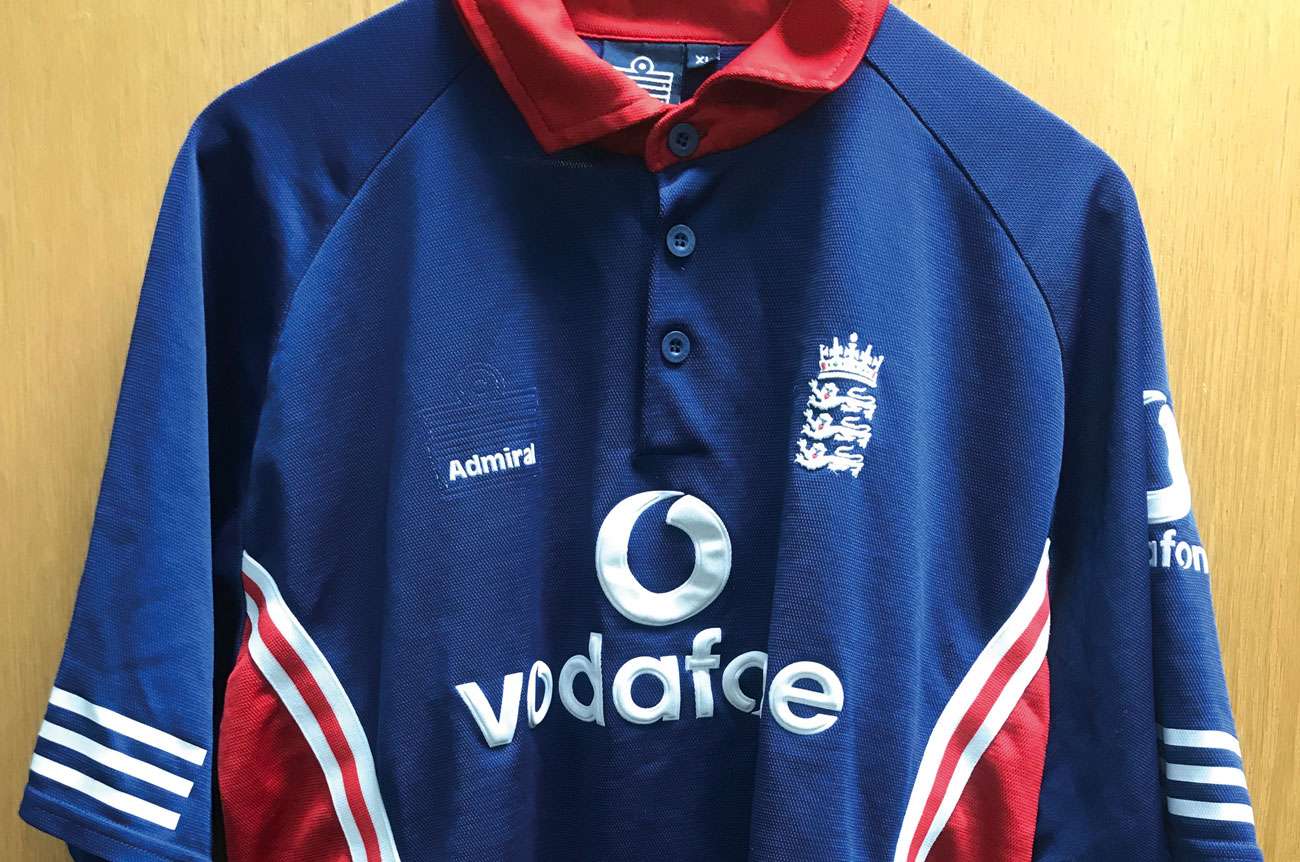
My England Cricket World Cup 2002 team shirt
I was never out of work but changed jobs often. I couldn’t find anything that absorbed me for more than two years, because I would get bored. Then I saw an advert for a job as a chauffeur and coffin bearer, for Pimm’s funeral service in Guildford. I only applied for the job because I thought it would be a bit different to drive cars around and do a bit of this and that. It was late 1982 aged 29, and I was offered the position and that was it, I was hooked! For the first time in my working life I felt I was actually doing something useful.
Our work involved all aspects of the funeral profession. Being helpful to families at such a distressing time, gave great satisfaction. I worked with really good people and formed some beautiful friendships that still last to this day. I was keen to learn more and more and was encouraged to do so. I learnt how to embalm and worked in the office learning how to be a funeral director. I passed the professional qualification of the National Association of Funeral Directors Diploma in 1988, and just went on from there.
In 1986 Pimms were bought out by the Co-op and my career developed further from there. I went on to become branch manager, then area manager and finally regional manager. In my last post with the Co-op I was responsible for 35 branches involving over 3,500 funerals, which was huge, probably too big. This wasn’t the job that hooked me and when I left in 2009 I was completely disenchanted with where the funeral business was going. The paperwork was overwhelming and the pressure to push people to purchase things felt immense and wrong. It had become all about number crunching and accountability as to why this or that hadn’t been achieved. It wasn’t my way at all.
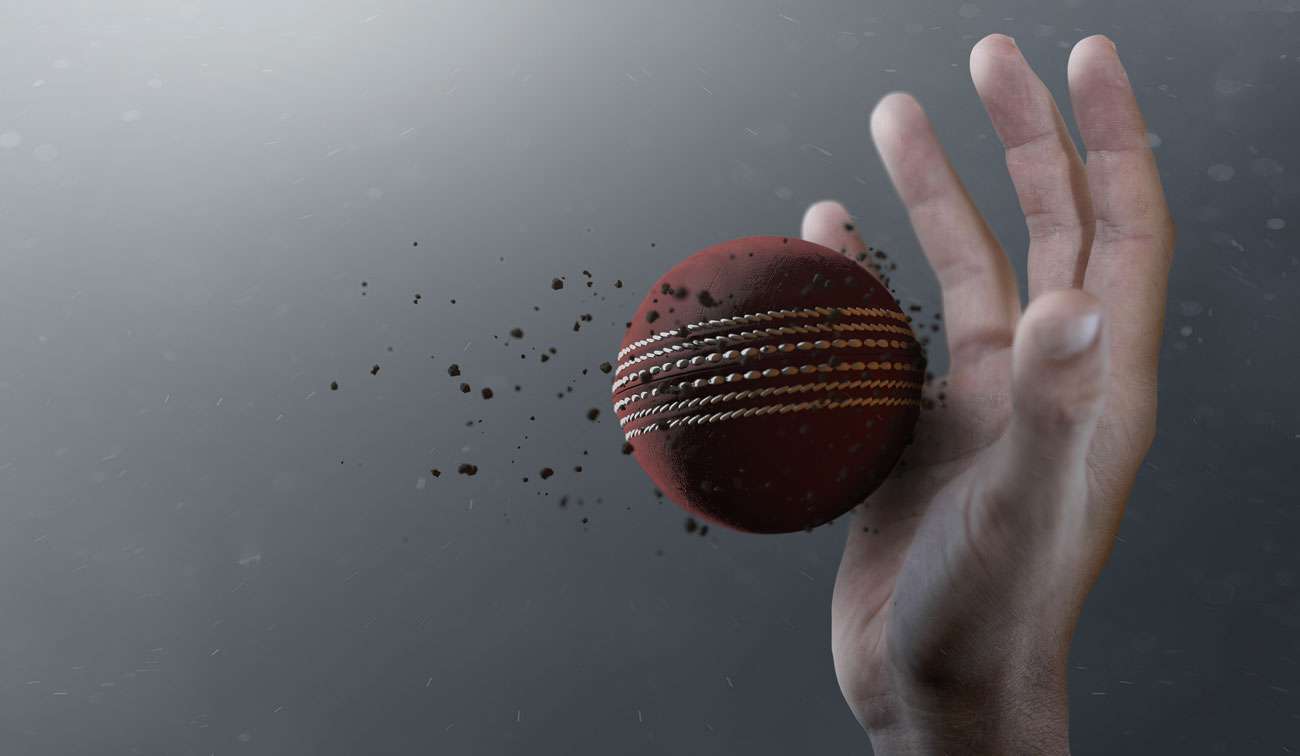
An opportunity became available for me to take redundancy when the company were restructured. I went on to start a Human Resources degree, thinking that could be another occupation I would enjoy, but I was only half way through the course when the big financial crash happened, and I didn’t complete the degree as opportunities in this field were drastically diminished.
I had to review my work life and applied for numerous jobs. Sitting on a computer browsing opportunities on the internet made it much easier to apply for a position but who was going to take me on? On top of all this, my sight was beginning to go at that point too.
My failing eyesight wasn’t due to a knock on the head or an accident, it was a gradual deterioration. Doctors thought I had a genetic problem. When I was about 34, I went to the opticians to have an eye test because I was having difficulty seeing in the dark. But the optician couldn’t offer any advice so referred me to a specialist who diagnosed a problem with the retinas and he in turn, referred me to a Retinal Specialist in Harley Street, London. It transpired that the red blood cells in my retinas were dying, meaning the retinas were dying too, for no obvious reason. He hadn’t come across this condition before and wasn’t able give a diagnosis. He wrote to a few other specialists and even presented my case at a World Conference to see if any other doctors had a patient with similar symptoms, but no one came forward.
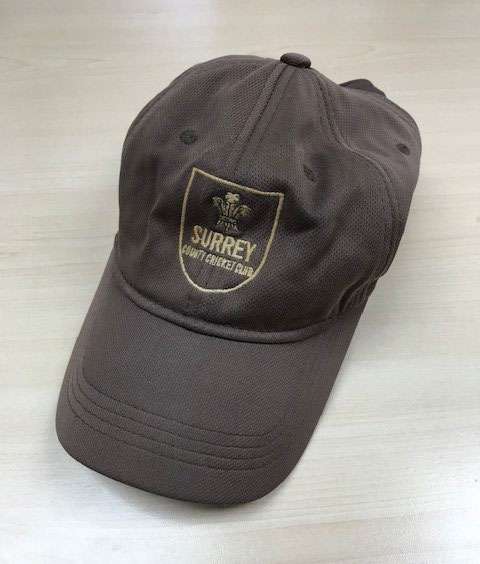
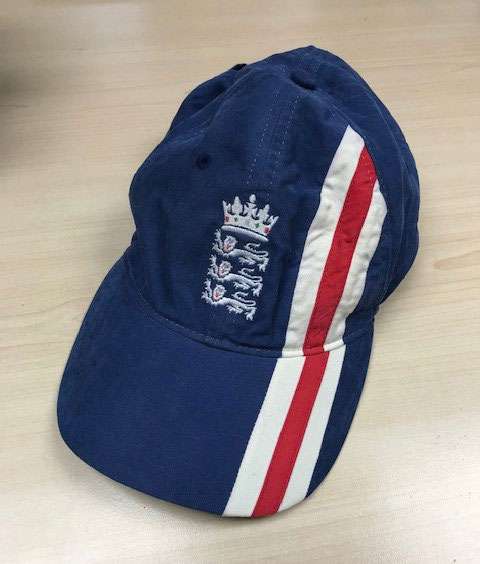
Surrey County cap (left) and his England World Cup cap (right)
So it seemed, I was one of a kind.
I was still able to drive in the day but then it became difficult to drive in the sunshine as well. Eventually I saw another specialist who told me the condition had gone too far and it wasn’t legal for me to drive anymore. I was then registered as ‘partially sighted’. Eyesight is measured by the distance each eye can define the detail of an object. For an average sighted person, each eye can see clearly with the object about 30ft away. For me, my right eye can see detail 6ft away and my left eye only 3ft away. I am now what they call ‘severely partially sighted’, registered as ‘blind’.
Having left the Co-op and gained an incomplete HR qualification that I couldn’t use, I ended up working for Mencap. It was a very satisfying job, working with a fantastic team. I worked in a residential home in Angmering, West Sussex. But after three years I realised that the profession that had hooked me in 1982 was where I really belonged. The opportunity to start my own business and put in place the values that I held dear opened up to me, here in Cranleigh.
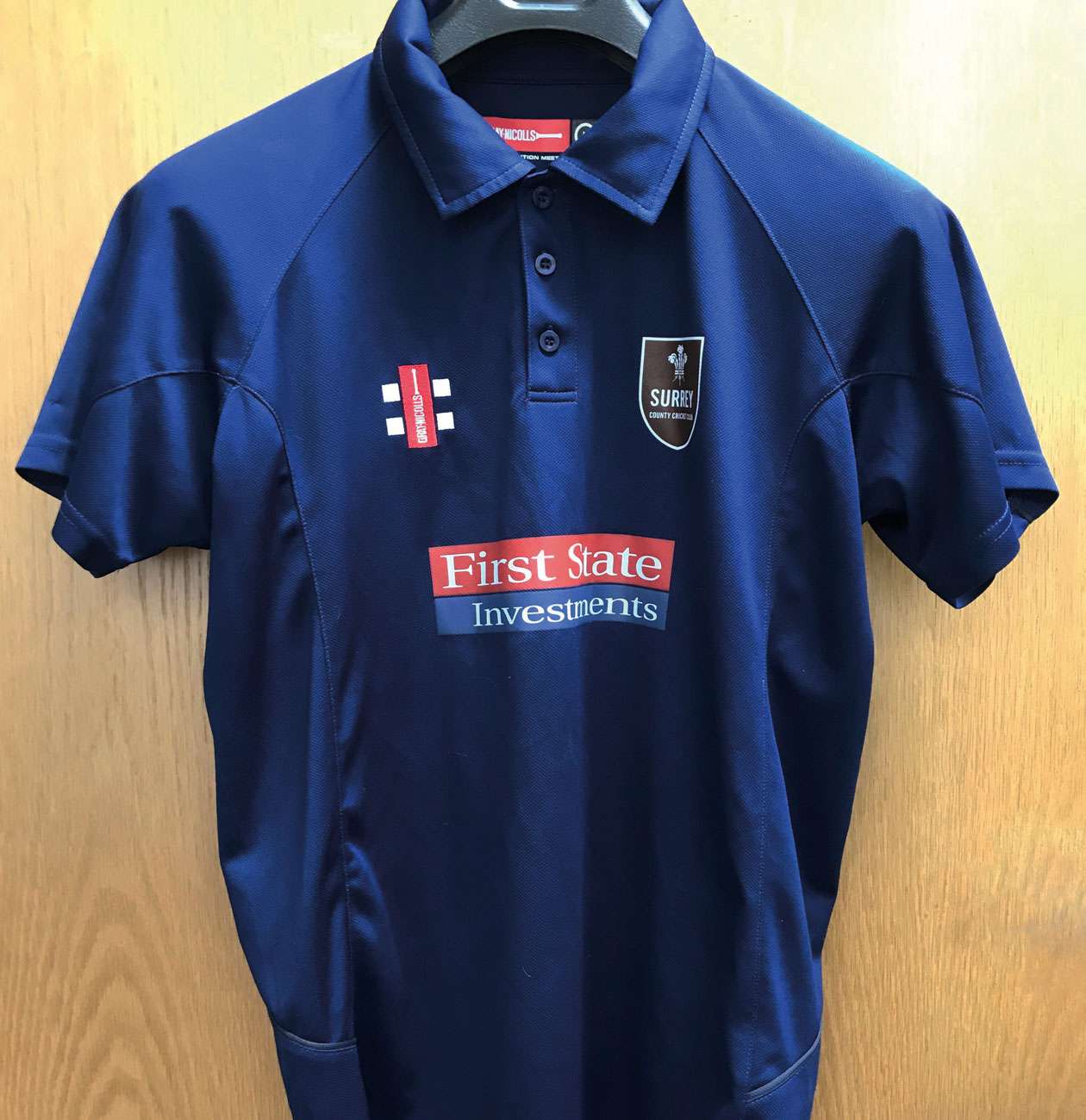
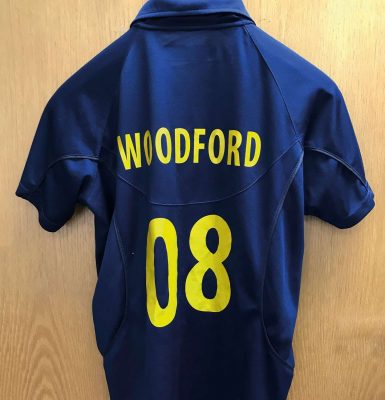
Surrey VICC shirt – front and back
My wife Gail and I both knew the village, and indeed it is where we first met whilst Gail was the funeral director at Pimm’s in Cranleigh in the late 80’s. Our work took us away from the village but we always hoped that one day we could return.
It was purely by chance that we visited one Thursday morning, having not been to Cranleigh for about 10 years. To our surprise we saw Marks and Spencer’s and Boots on the High Street and realised it had changed from the little village it was in the early 90s. We looked for a place to set up the business but couldn’t find any premises in the High Street. We walked around the cemetery, crossed the road nearby and spotted a shop at the lower end of Ewhurst Road which was empty. We went to the adjacent shop and spoke to the owner who explained the premises was vacant and showed us around.
It took a little while to finalise the details but we finally got the keys in February and opened our new business in April 2012. We immediately started looking for a house in the village because our son had left school by then and gone on to study at the University of Surrey. We moved home in 2013 and absolutely love living here.
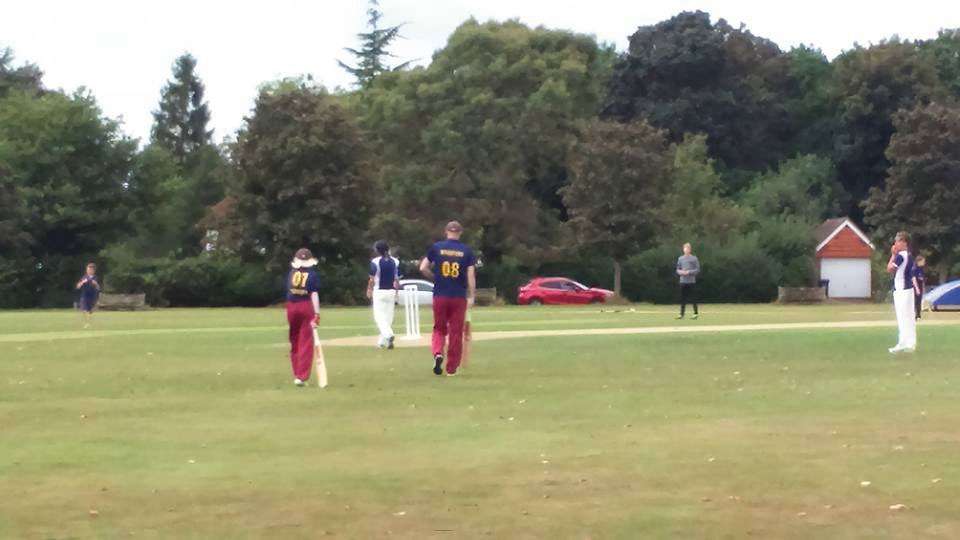
Playing during a practice match
In order to relax in my leisure time I play ‘Visually Impaired Cricket’ which I discovered in my 40s. Regular cricket as everyone knows it, I now refer to as ‘Red ball Cricket’, given the colour of the ball, Visually Impaired Cricket being played with a white ball, containing beads inside that rattle when thrown.
When I was young, cricket had been one of my main sports. I’d play football in the winter and cricket in the summer. I played for the local village team in Normandy at the age of 10 and absolutely loved the game. I played for them until my early 20s, then football took over for a while because cricket is quite a time-commitment. A cricket match is basically an all-day thing and as a young person it took a big chunk out of a weekend. I’ve played for a few different teams over the years until I couldn’t see the ball anymore and it was getting dangerous.
“Blind cricket matches work well until a guide dog decides to steal the ball from the pitch and run off with it (happened to us at Arundel Cricket pitch)…imagine several blind and partially sighted players trying to find a quick running dog with a ball! Rather comedic to watch I am told.” – John Woodford
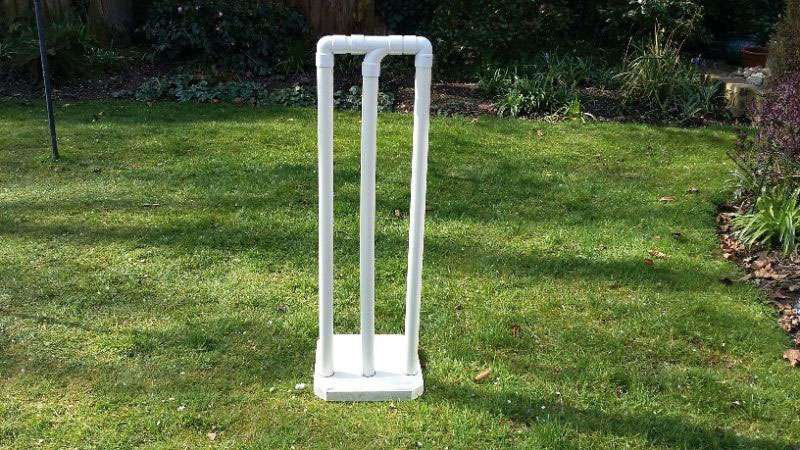
A set of our cricket stumps
After an interval when I didn’t play cricket at all, I discovered Visually Impaired Cricket through a support group I belonged to called ‘4sight’, in Bognor. I became a member and regularly received a monthly magazine they produced. There was an article one month by Geoff Smith, an England Visually Impaired Cricketer who lived in Hove and wanted to set up a Sussex team. I was very enthusiastic about this idea and went along to Arundel Cricket Club one evening to meet up with some other guys. We knocked the ball about, discussed it and got to know each other. And that’s how Sussex Sharks Visually Impaired Cricket Club began with just four of us at the time.
Geoff was a social worker and knew several visually impaired people. He encouraged his contacts to play cricket. Within a year we had 20 players, male and female, ranging from 10 years, up to Geoff who was the oldest, and myself the second oldest at 48. In 2001 the club was formed and affiliated to Sussex Cricket Club. We used their indoor nets at Hove and they supported us, providing kit, transport and financial support for the team. We joined the National League, travelling all across the country playing other Visually Impaired Cricket Teams. In 2002 I was invited to join a weekend training squad for the England team. I was picked to play in the following one-day series against Pakistan, where I made my debut for England. (We lost the one-day series, 2-1). This was in June and the World Cup was in November. I was selected for the England squad and we travelled to India to play.
The team was financed through donations and sponsorships. The Brian Johnston Trust supported us and another organisation called the Primary Club. This is a Club a batsman joins if ever they get the ‘Golden Duck’. A ‘golden duck’ refers to a batsman who is out for nothing on the first ball they face. So be it a learner, visually impaired or professional cricketer, they join the Primary Club. This Club is a huge supporter of disability cricket and helped finance our tour to India.
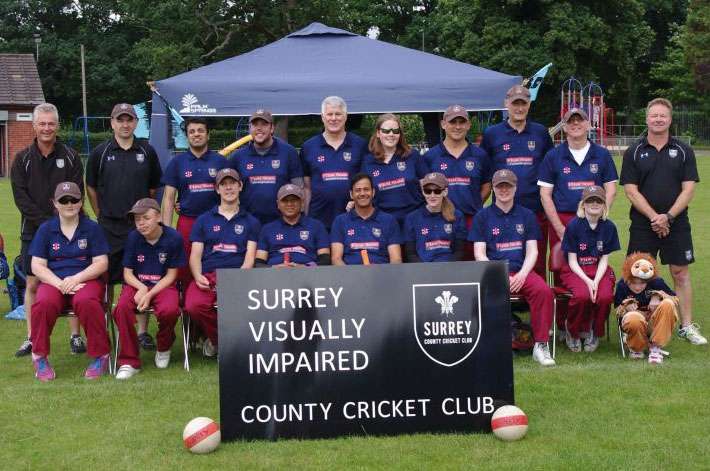
Surrey Visually Impaired County Cricket Club 2016. That’s me eighth from the left in the back row.
On this tour we took three sighted guides, a manager and physio covering their expenses as well. Apart from that it was just the squad, 17 players in all, no wives or partners accompanied us. We were there for three weeks.
There were only seven countries playing Visually Impaired Cricket internationally at that time, so we all played each other. One of our games in the round robin was a victory over Pakistan and one of our totally blind cricketers scored a double century. The top four teams qualified for the semi-finals, including us and we played against Pakistan again but they beat us on this occasion, going on to win the entire tournament. We ended up coming third, which was a great achievement. It was the best position England’s ever achieved in the world cup, before or since.
Last year the first ladies cricket team went on tour. The International set up won’t allow ladies to play unfortunately, so they’re not affiliated with the ECB. They have to call themselves the UK Ladies. They’ve played in the West Indies and played a team in the Far East, so that game is growing as well. On a domestic basis, girls can play in all our teams.
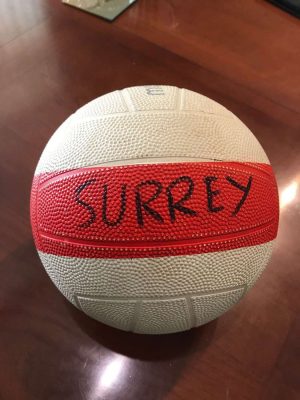
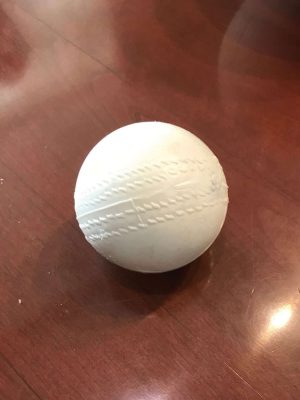
Large size 3 football and the small white ball
The rules of Visually Impaired Cricket are virtually the same as sighted cricket, with the exception of one or two things. There are various categories of sight, and that’s the same in any visually impaired sport. These categories range from B1 – where people are totally blind, through to B3 which is mid to partial, for people who have relatively good sight but are registered partially sighted, and in between it’s B2 which is what I am – low to partial. When joining a team, a player has to be classified by British Blind Sport and have a regular sight test every three years.
There are two sizes of balls played. The large ball is a size 3 football and must be bowled over arm. The small ball is the same size as a usual cricket ball. The larger ball is used for domestic cricket, the smaller for international. When bowling the big ball, a size 3 football, it has to bounce once for a B3. For B2 and B1 it has to bounce twice. This is so the player can hear the ball approaching by the noise rather than by it startling them by bouncing right at their feet before they know about it, so they get two bounces. The only other difference is that for B1, totally blind players, their runs are doubled. The smaller ball has to be bowled under arm and rolled along the ground; this is the same for any category of sight. Due to the differing nature in bowling styles from domestic to international cricket, the batting styles vary considerably. In the domestic form of the game, the batting strokes are similar to those used in red ball cricket, whereas in international games the main strokes are the sweep and the drive.
Fielding is very difficult. B1s stand right on the edge of the pitch, very close to the bat. They can catch off one bounce, so if they hear it, they can move and catch the ball. There are some very good players that can do that, who have impeccable hearing and can sense the sound well.
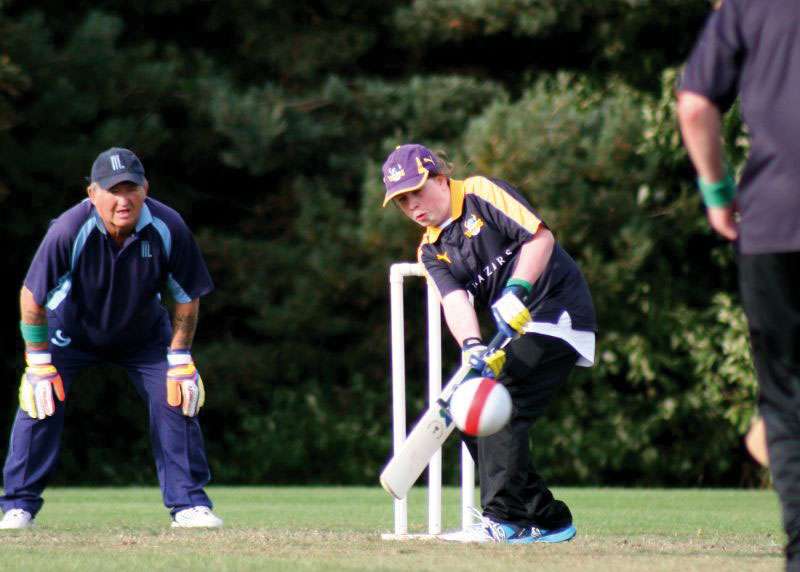
Cricketers in action
Catching a player out happens the same way as in usual cricket too. There are usually one to two catches in a game, mainly by the B3 classification, and the occasional B2. In a sense that sums up the beauty of the game, and the difficulty. The beauty of Visually Impaired Cricket is it’s totally inclusive, a mixed team of varying degrees of ability. Although we play in leagues and cup games, it’s always played with good spirit. In comparison in a Red ball cricket match when someone makes a mistake, there’s someone’s shouting at you. Whereas in Visually Impaired Cricket there’s total encouragement because we’re all in it together and anyone of us can make a mistake. There’s great comradery and team spirit.
When I moved from Sussex to Surrey in 2013, I contacted Sight for Surrey, and they put me in touch with the guy in charge of Visually Impaired Cricket in Surrey.
I play for Surrey now, I joined them 4 years ago. Again, it started as a very small team but it’s grown and has been very successful. We’ve just joined the National League and have a team in the development league as well. We’re affiliated to Surrey Cricket Club, and the Oval is our official ground, though we don’t play there. Our home team ground is Frimley Cricket Club, just opposite Frimley Hospital. A cricket match is virtually a whole day commitment. The game starts at 1pm and finishes about 6:30-7pm, depending on whether both teams have their overs. We play in the T20 competition as well, and currently hold the cup. I’ve gradually accepted my increasing blindness. The biggest issue is that there’s never been a diagnosis so I don’t know quite how bad it’s going to get.

John Woodford’s Family Funeral Service
My involvement in Visually Impaired Cricket opened up a whole new sports world to me. I would encourage other visually impaired sports people to make enquiries. Local enthusiasts can just go onto Surrey Cricket Club’s website where visually impaired cricketers have a section, or contact British Blind Sports.
Anyone living in the village is welcome to contact me and I can put them in touch with our Manager. They can come along to training; any ability is welcome. The beauty of the Club is that there are youngsters who have never been able to participate in sport, or run around a field and that’s exactly what we get them to do. We have young people who have never played cricket before and some adults who haven’t either. Most of them turn into really good players. Others who have participated have gone onto participate in other visually impaired sports like tennis, bowls and goal ball. ![]()











